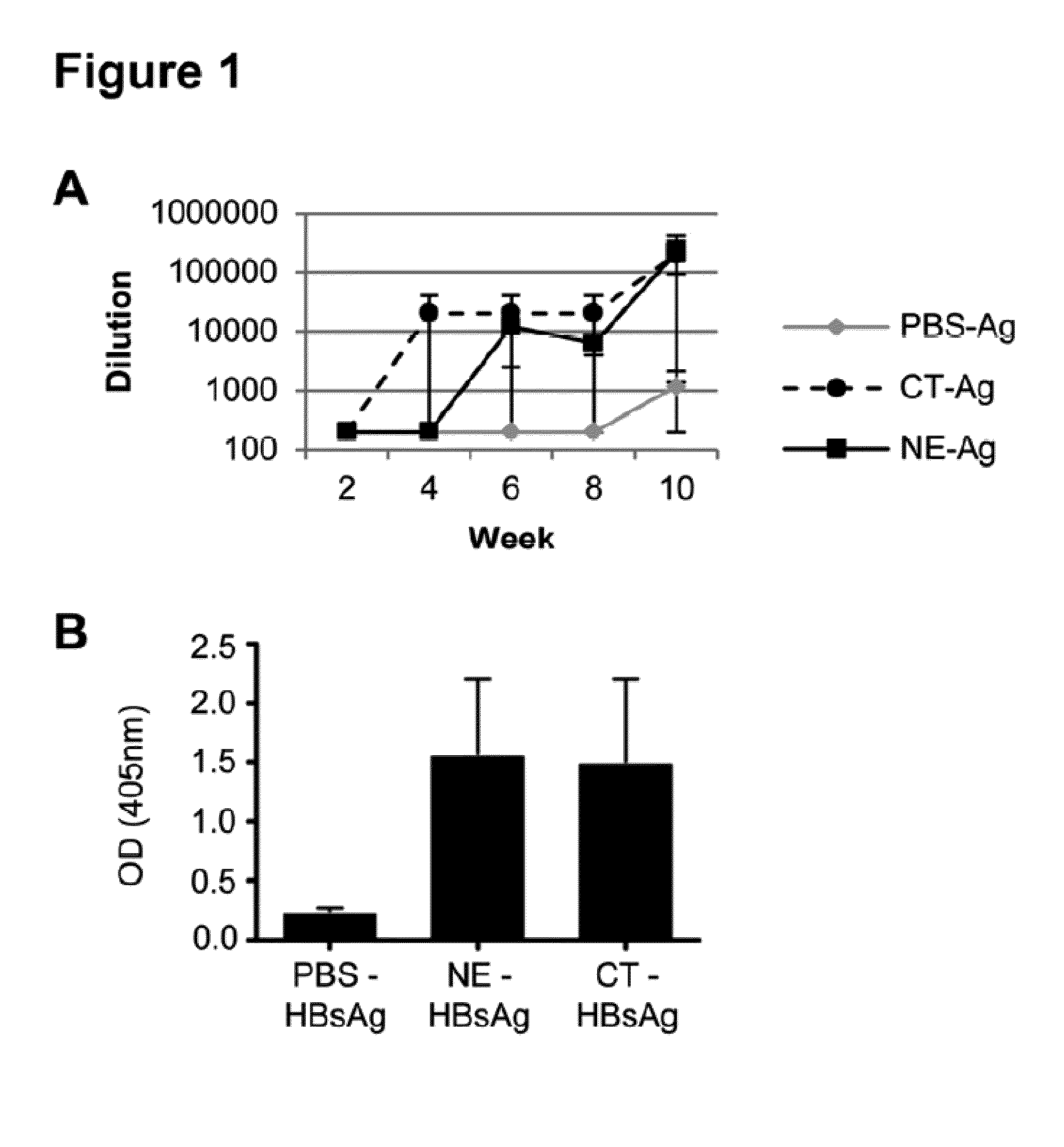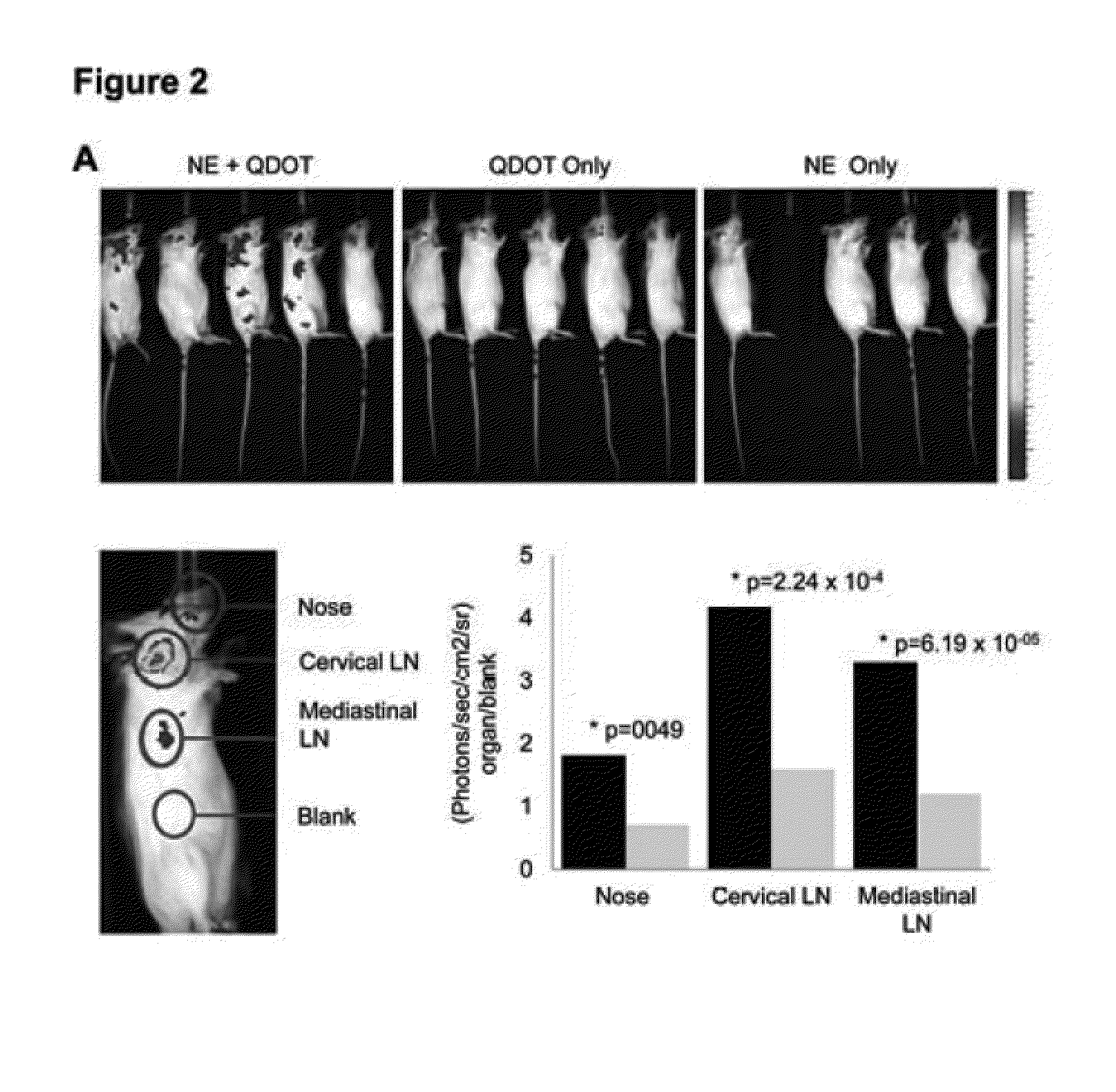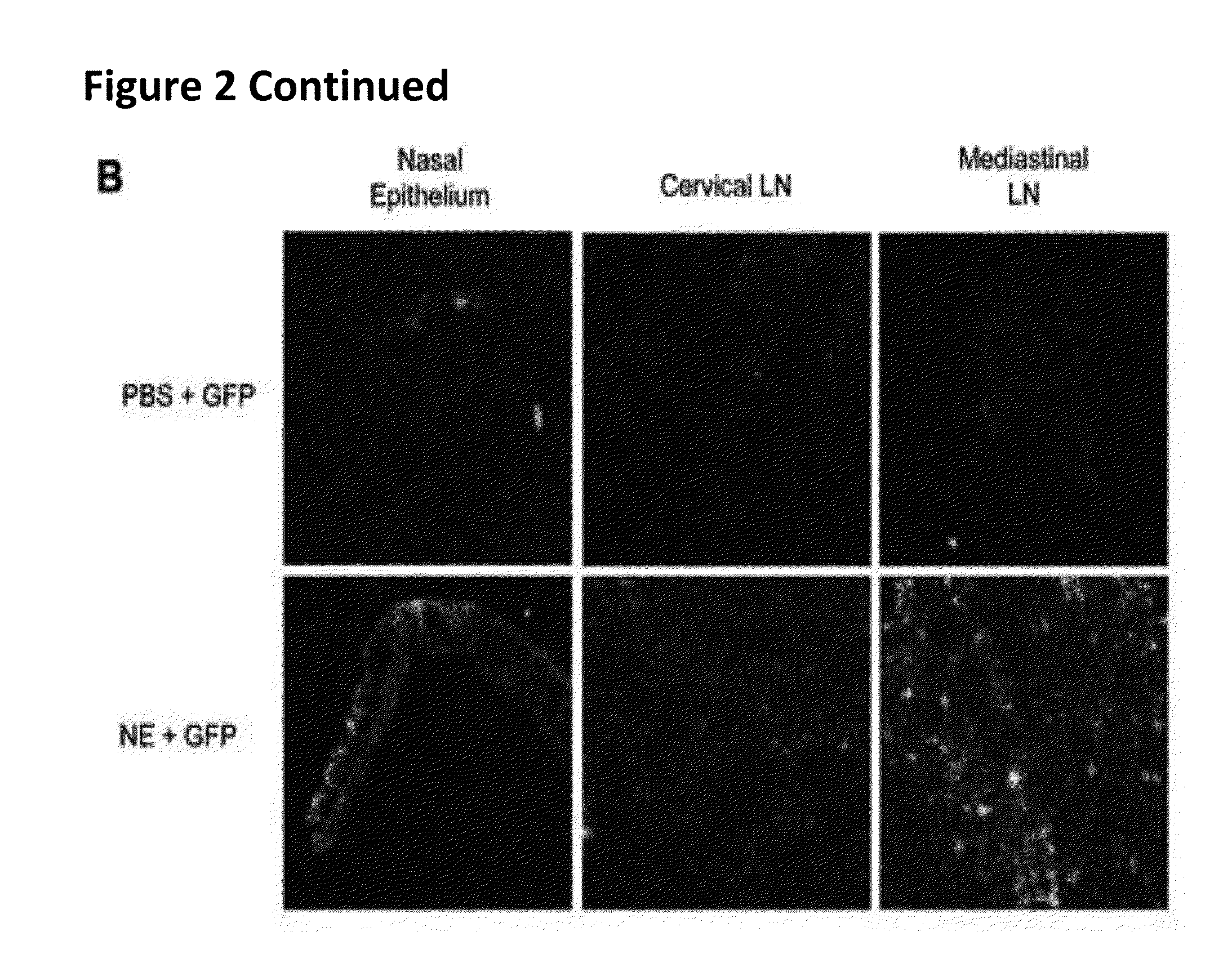Immunogenic apoptosis inducing compositions and methods of use thereof
a technology of immunogenic apoptosis and composition, which is applied in the direction of antibody medical ingredients, viruses/bacteriophages, biochemistry apparatus and processes, etc., can solve the problems of not all of these mechanisms are necessarily activated, and many antigens are poorly immunogenic or non-immunogenic, so as to reduce the risk of infection
- Summary
- Abstract
- Description
- Claims
- Application Information
AI Technical Summary
Benefits of technology
Problems solved by technology
Method used
Image
Examples
example 1
Materials and methods
[0322]Mice. Naïve 8-10 week-old female CD-1 and C57BL / 6N mice were purchased from Charles River Laboratories (Wilmington, Mass.). Naïve 8-10 week-old female B6.Cg-Tg(HLA-A / H2-D)2Enge / J, IL-6 gene deficient mice (IL-6− / −) [B6.129s2-IL6TM1KOPF / J] and C57BL / 6J mice were purchased from Jackson Laboratories (Bar Harbor, Me.). All mice were housed in specific pathogen-free conditions in facilities maintained by the University of Michigan Unit for Laboratory Animal Medicine. The University Committee on Use and Care of Animals (UCUCA) at the University of Michigan approved all procedures performed on mice.
[0323]Cell lines. Primary nasal epithelial cells were cultured from the nasal septum of C57BL / 6N mice as described in Antunes et al., Biotechniques 2007. 43: 195-196, 198, 200 passim). Mouse bone marrow derived dendritic cells (BMDC) were generated (See Lutz et al., J. Immunol. Methods 1999. 223: 77-92). Briefly, BMDCs were isolated from C57BL / 6 mouse femurs and tibias...
example 2
Adjuvant Activity of Nanoemulsion Compared to Adjuvant Activity of Cholera Toxin
[0346]Nanoemulsion mucosal adjuvant ability to augment immune responses when co-administered with protein antigens was examined, and the adjuvant activities compared with activities achieved with cholera toxin (CT). Adult, specific pathogen free, female B6.Cg-Tg(HLA-A / H2-D)2Enge / J mice were nasally immunized with either 20% poloxamer 407-based nanoemulsion (NEp)+20 μg HBsAg, 1 μg CT+20 μg HBsAg, or 20 μg HBsAg alone 3 times four weeks apart (See FIG. 1A). The kinetics of the anti-HBsAg IgG serum antibody response was not significantly different (p>0.05) between the NE and CT immunized groups at any time point although the CT appeared to have a higher titer at 4 weeks prior to the boost. The end titer of anti-HBsAg IgG measured 6.4×105 in CT-immunized mice compared to an end titer of anti-HBsAg IgG measuring 2.1×105 in NE immunized mice. Measurement of secreted anti-HBsAg IgA revealed that both CT and NE ...
example 3
Nanoemulsion Administration does not Cause Inflammation or Redirect Antigen to Olfactory Tissues
[0347]Adjuvant side effects are a significant concern and a barrier to human use. Therefore, studies were performed during development of embodiments of the invention in order to evaluate whether nanoemulsion produced any CNS inflammation, or whether nanoemulsion redirects antigen to olfactory tissues after intranasal immunization as has been reported with CT (See, e.g., van Ginkel et al., Infect Immun 2005. 73: 6892-6902; Couch, R. B., N Engl J Med 2004. 350: 860-861). A sensitive HPLC assay was used to characterize the presence of cetylpyridinium chloride (CPC), a component of the NE, in brain tissue from immunized animals. Whole brain samples were evaluated from C57B1 / 6N mice treated intranasally with 15 μl of 20% NE. The results were compared to measurements in tissues from mice intranasally administered 15 μl of either sterile PBS or 1 μg CT plus an equivalent concentration of CPC to...
PUM
| Property | Measurement | Unit |
|---|---|---|
| Immunogenicity | aaaaa | aaaaa |
| Surface charge | aaaaa | aaaaa |
Abstract
Description
Claims
Application Information
 Login to View More
Login to View More - R&D
- Intellectual Property
- Life Sciences
- Materials
- Tech Scout
- Unparalleled Data Quality
- Higher Quality Content
- 60% Fewer Hallucinations
Browse by: Latest US Patents, China's latest patents, Technical Efficacy Thesaurus, Application Domain, Technology Topic, Popular Technical Reports.
© 2025 PatSnap. All rights reserved.Legal|Privacy policy|Modern Slavery Act Transparency Statement|Sitemap|About US| Contact US: help@patsnap.com



